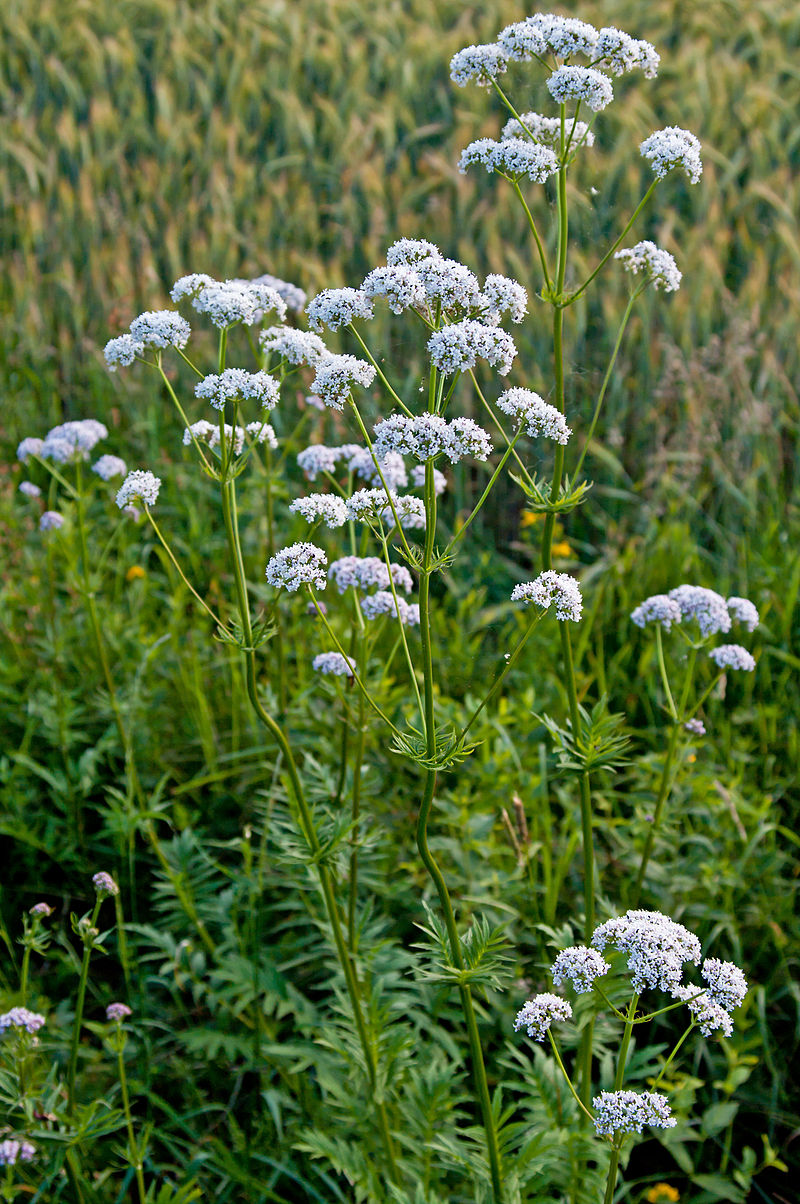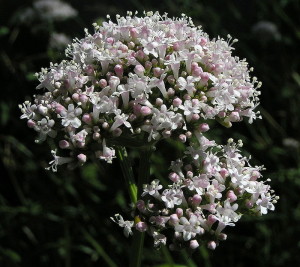Valerian (Valeriana officinalis) has been used as an aid for sleep for thousands of years. Science is divided on whether this is true or not, but people swear by its efficacy still. It is most often drunk as a tea mixed with chamomile before bedtime. It is enough of a sedative that one of valerian’s nicknames is “poor man’s Valium”.
Similar to catnip, valerian acts as a sedative for humans but is an attractant to cats. It contains the chemical actinidine which mimics the odor of cat urine.
Interestingly, valerian is also considered a rat attractant and has been used to bait traps. It is thought that the Pied Piper of Hamelin hid valerian in his pockets to attract rats rather than relying solely on his musical ability with his pipe.
Valerian is a perennial native to Europe and North Asia. It has been introduced to North America. Its habitat is stream banks and marshes so it is perfect for any wet spots in your yard. Valerian loves full sun and rich soil. It is hardy in zones 4 through 8.
The plants usually grow 3’ to 4’ tall, but occasionally reach heights up to 5’ tall. The flowers vary from white through pink and appearing in late spring. The flowers smell like vanilla but the foliage, which contains the adtinidine, has a foul odor often described as smelling like unwashed feet.
Valerian can be grown from seed. It will readily self-sow itself in your garden or you can direct sow the seeds in your garden when the soil temperature reaches 68⁰F or start your seeds indoors and plant the seedlings outdoors when the soil has warmed to 68⁰F. Surface sow your seeds. Do not cover them. They need sunlight to germinate. Press the seeds firmly on the soil to ensure good contact. The temperature of the soil is what tells the seeds when it’s time to germinate. Germination will occur within 1 to 2 weeks. Keep the seedlings well watered. Since valerian’s natural habitat are stream banks and marshes, you don’t need to worry about over watering them as you do with most herbs.
Valerian plants will form large clumps which, if left alone, will result in poor growth. The clumps can be divided in either the spring or the fall. Simply dig up a clump, shake the dirt off it and look for natural divisions in the root crown. You should be able to break them apart with your hands. If not, you can use a knife or your garden shears to cut the divisions apart. Make sure each division has its own set of roots. Plant the divisions 12 – 24 inches apart. Water well until the new plants are established.
Valerian roots can be harvested in the spring or more commonly in the fall. Early fall is when the roots have the highest concentration of the essential oil. You can harvest 1 year old roots, but most herbalists wait at least two years so that the roots are a good size. The easiest way to harvest the roots is to dig up the entire plant, making sure that the root stays attached to the plant and then hang the plant to dry for several weeks until the root is completely dry. Once dried, cut away the plant and store the dried roots in well-sealed containers in a cool, dry place.


